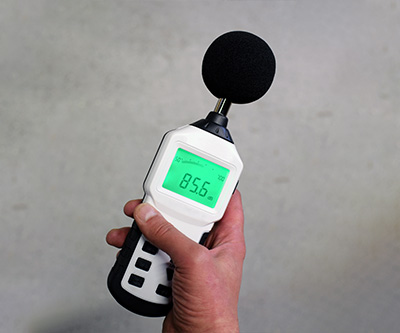Hearing Loss Prevention
Posted: Dec. 24, 2019 • By Kevin Kohler

Is hearing loss prevention just about wearing ear protection?
Not really, “hearing loss prevention” or “hearing conservation” programs are about examining your work environment, the noise that you are exposed to and the pattern of noise exposure, to build a comprehensive hearing loss prevention program that:
- addresses the noise hazards that you face,
- establishes the noise controls to be used and
- measures the effectiveness of the program
Hearing loss is a serious concern

Hearing loss is not just an inconvenience. According to a Statistics Canada Health Facts Sheet:
Hearing loss can have many emotional and social consequences including social isolation, depression, safety issues, mobility limitations and reduced income and employment opportunities.
A Canadian Health Measures Survey found that 42% of Canadians have worked, or now work, in an environment where they are required to speak in a raised voice to communicate with someone standing an arm’s length away. Among these individuals 41% never used hearing protection. Needing to raise your voice to talk to someone nearby is a rough measure used to indicate that noise levels are potentially hazardous.
Exposure to uncontrolled noise hazards can lead to permanent hearing damage and is a leading cause of occupational disease according to the Ontario Ministry of Labour (MOL). In addition to the negative health effects suffered by workers, the MOL cites noise-induced hearing loss claims costs in excess of 50 million dollars per year. It’s the same story in other jurisdictions.
Hearing loss is preventable
Sensorineural hearing loss is the most common type of permanent hearing loss and occurs when there is damage to the inner ear or the nerve pathways from the ear to the brain. Permanent hearing loss can occur following exposure to loud and prolonged noise.
Using our hierarchy of controls, from most to least preferred, noise hazards can be controlled and hearing loss prevented through:
- Elimination or substitution – design changes to, or replacement of, noisy equipment
- Engineering – sound barriers or enclosures
- Administrative – signage or controlled access to noisy areas
- PPE- hearing protection such as earmuffs and earplugs
When is a hearing loss protection program required?

Hearing loss protection or hearing conservation programs are either required by law or should be undertaken as part of your general duty to protect the health and safety of workers. They are normally required when noise levels exceed the occupational exposure limit (OEL).of 85 dBA over an 8 hour work shift,
To determine whether you need a hearing conservation program, a threshold noise level is established, usually 80dBA. If you determine that you are over the threshold, or likely to be, based on the equipment you use or the industry you work in, then you would be expected to conduct a noise survey to confirm the actual noise levels that workers are exposed to. A formal noise survey would be conducted, in an approved manner, using personal noise dosimeters and ambient monitoring, according to the prevailing legislation.
What are the elements of a hearing loss protection program?
The elements of a hearing loss protection program would normally include:
- Hazard assessments and noise monitoring
- Noise controls based on the hazard assessment results
- Hearing protection PPE as a last line of defense
- Training and education on the program and hearing loss hazards
- Audiometric testing to verify that the program is working
- Continuous improvement and evaluation
Best Practices
If your work environment is noisy, a hearing conservation program my be required and is a best practice to protect the health and safety of employees. Hearing loss is preventable and the time to start protecting every person hearing is now.
Related Articles

Forklift safety
What are forklifts? We probably all would recognize a forklift when we see one but some other names are commonly […]
Read Article
Returning to work during COVID-19?
Around the world many companies are only now contemplating how to emerge from reduced, or even halted operations. Each and […]
Read Article